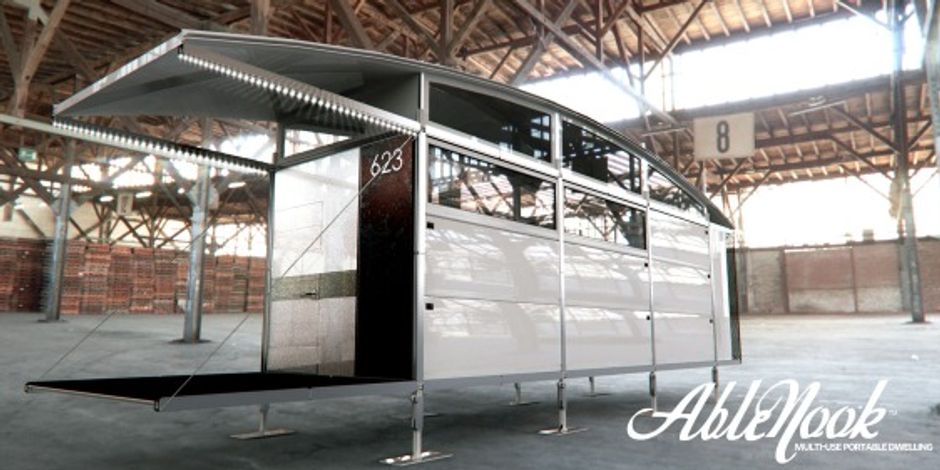Ablenook

Researchers Sean Verdecia and Jason Ross at the University of South Florida have developed a technology that relates to a prefabricated living module that snaps together and is easily assembled and transported.
In disaster areas or in situations where more space is needed, shelters, such as trailers, are often expensive, deployed slowly, and require technical knowledge in order to be assembled. Furthermore, they often need large clearings with flat terrain and come in “one size fits all” packages. What is needed is a prefabricated living module that snaps together and is easily assembled, transported, and adaptable to diverse terrain.
Our researchers have invented a rapidly deployable portable structure, comprised of interlocking components which can be assembled by unskilled laborers in a short period of time. These components are shipped flat-packed in order to maximize the number of families which are helped, while reducing transportation costs.
The main structural members of the module are “universal.” This means that the floor joists are the same as the wall columns. The structural members can be made from extruded aluminum parts, with electrical bus duct conduits in each one, so that the wiring is simply connected as you clip together the parts, providing outlets wherever needed inside. Weather seals are included between the structural members.